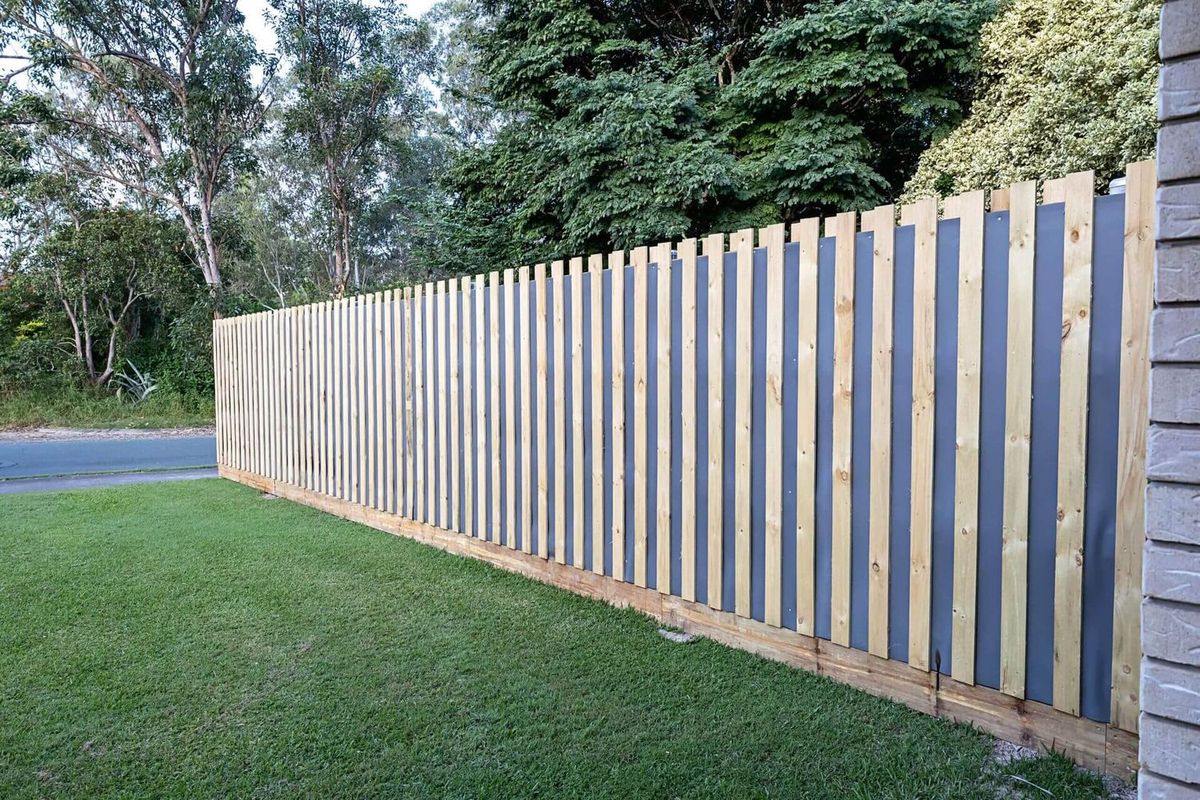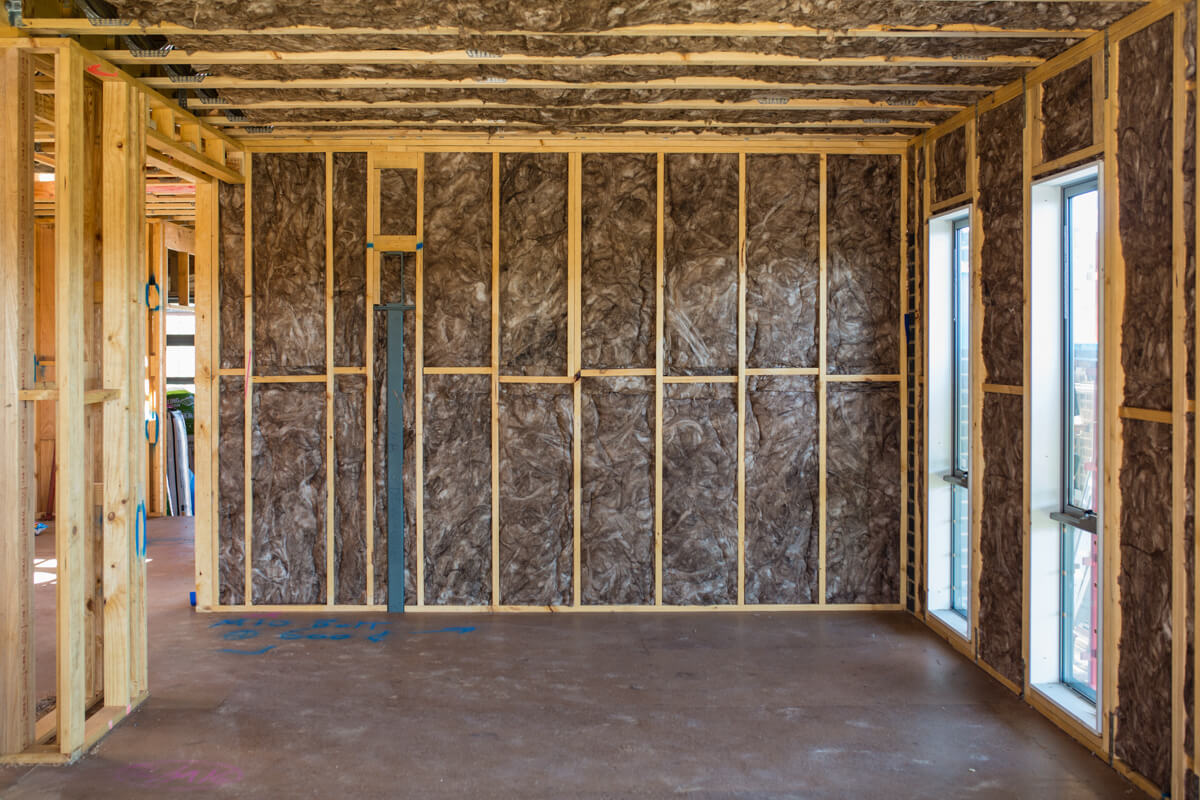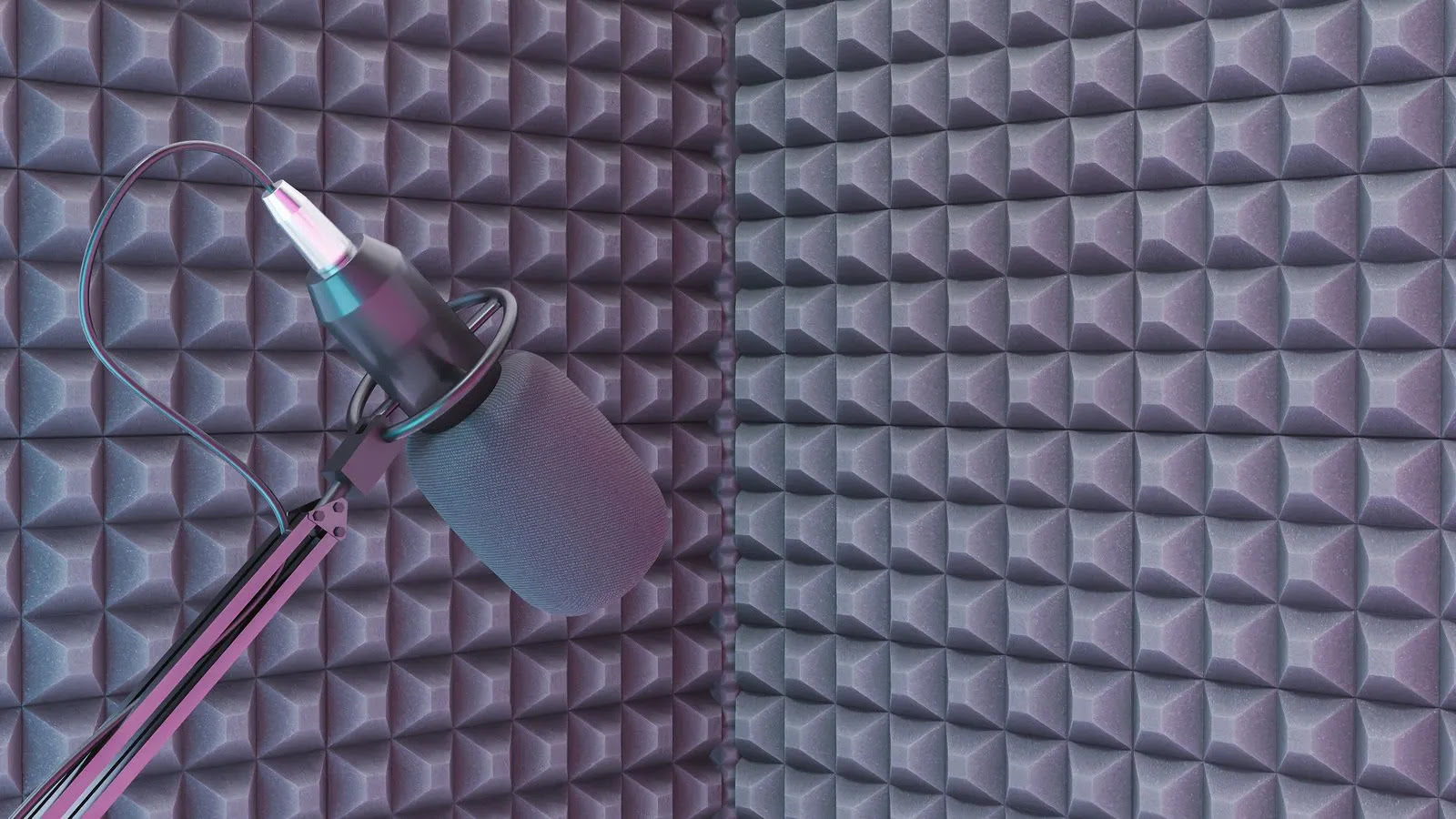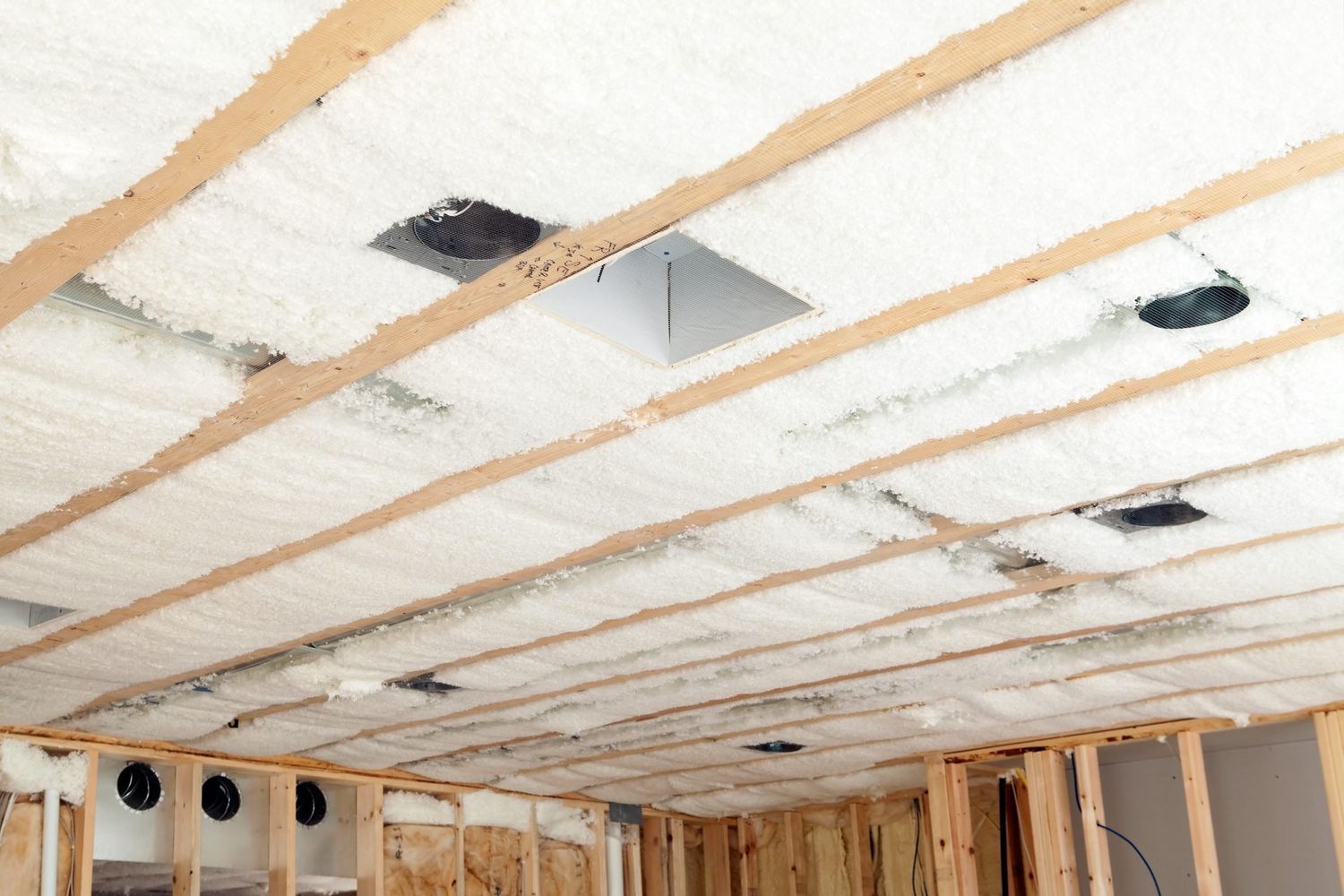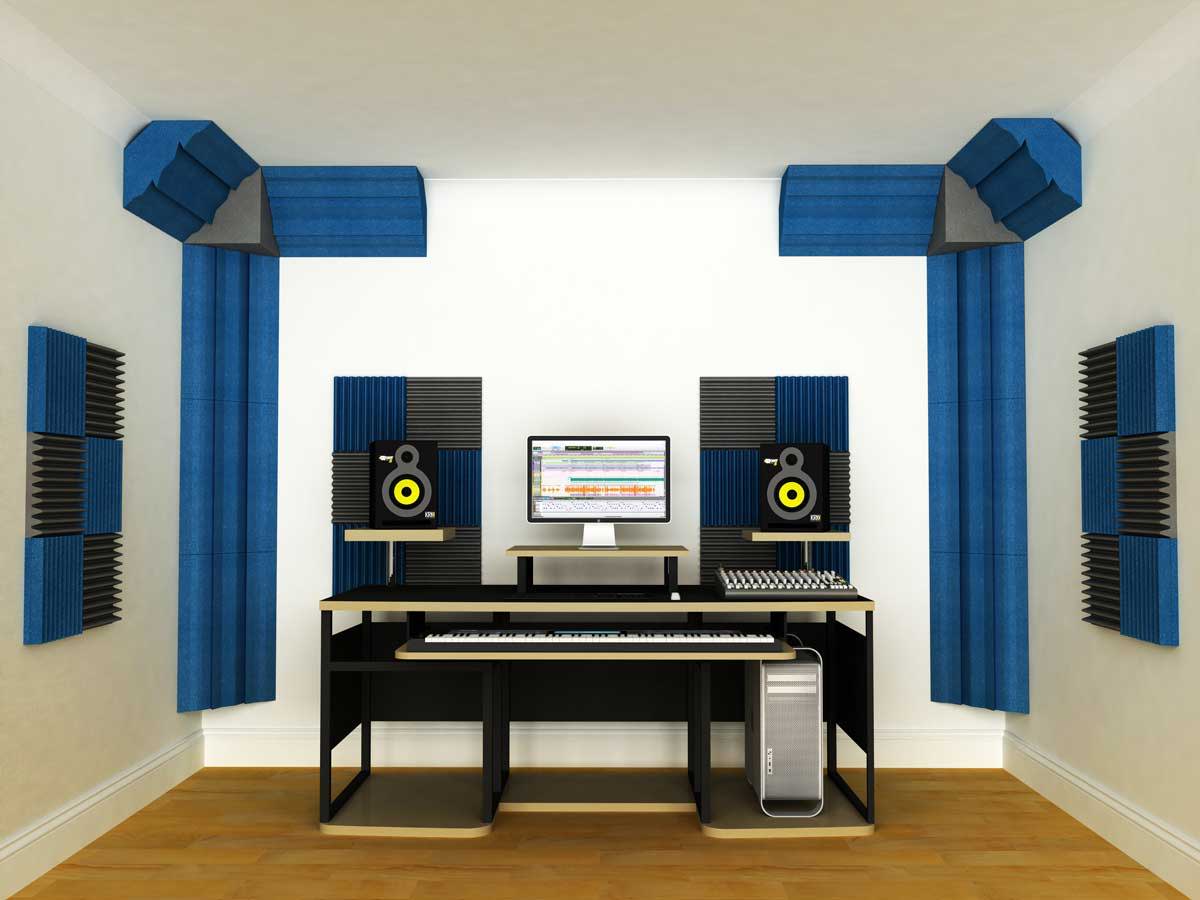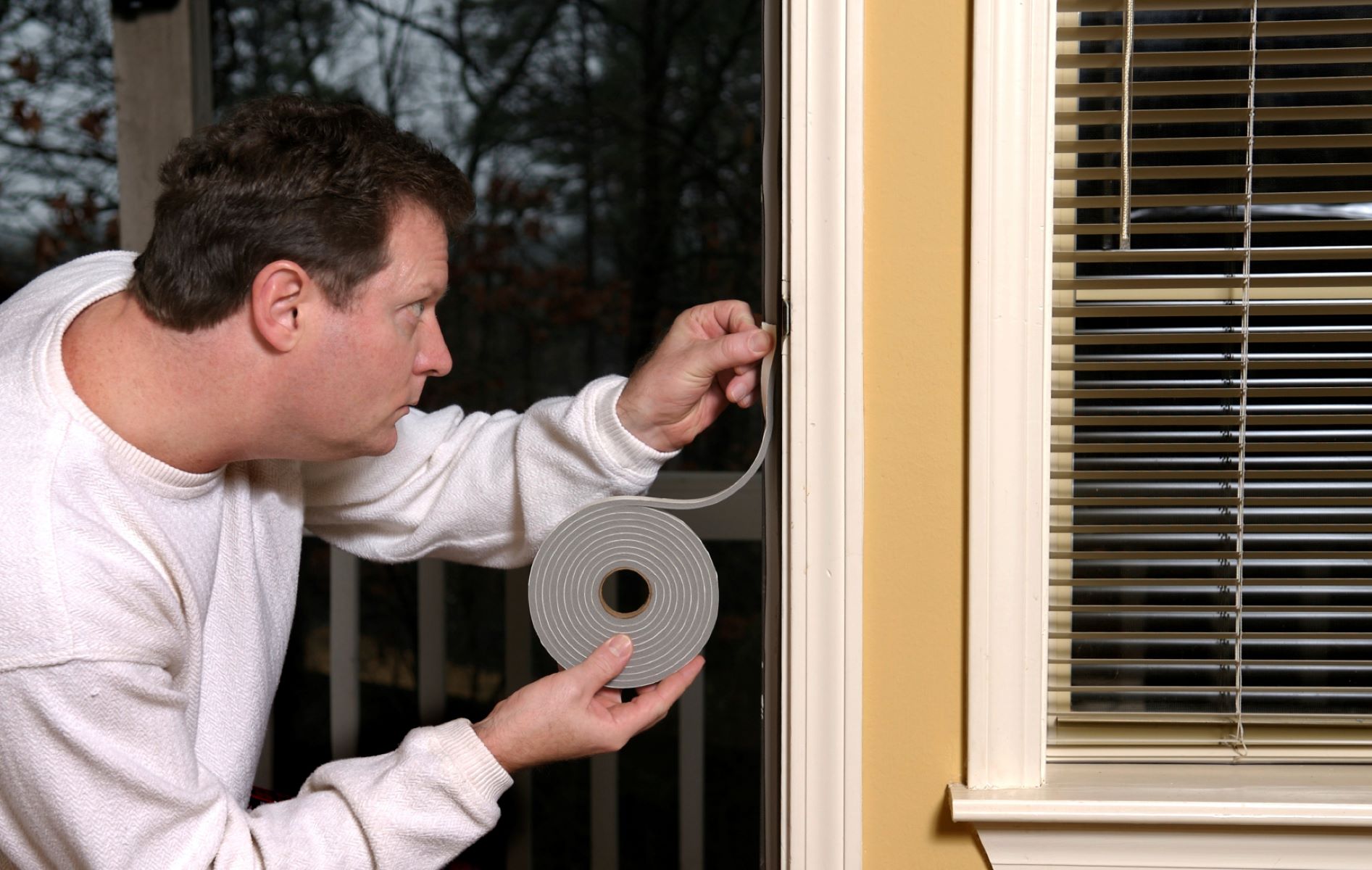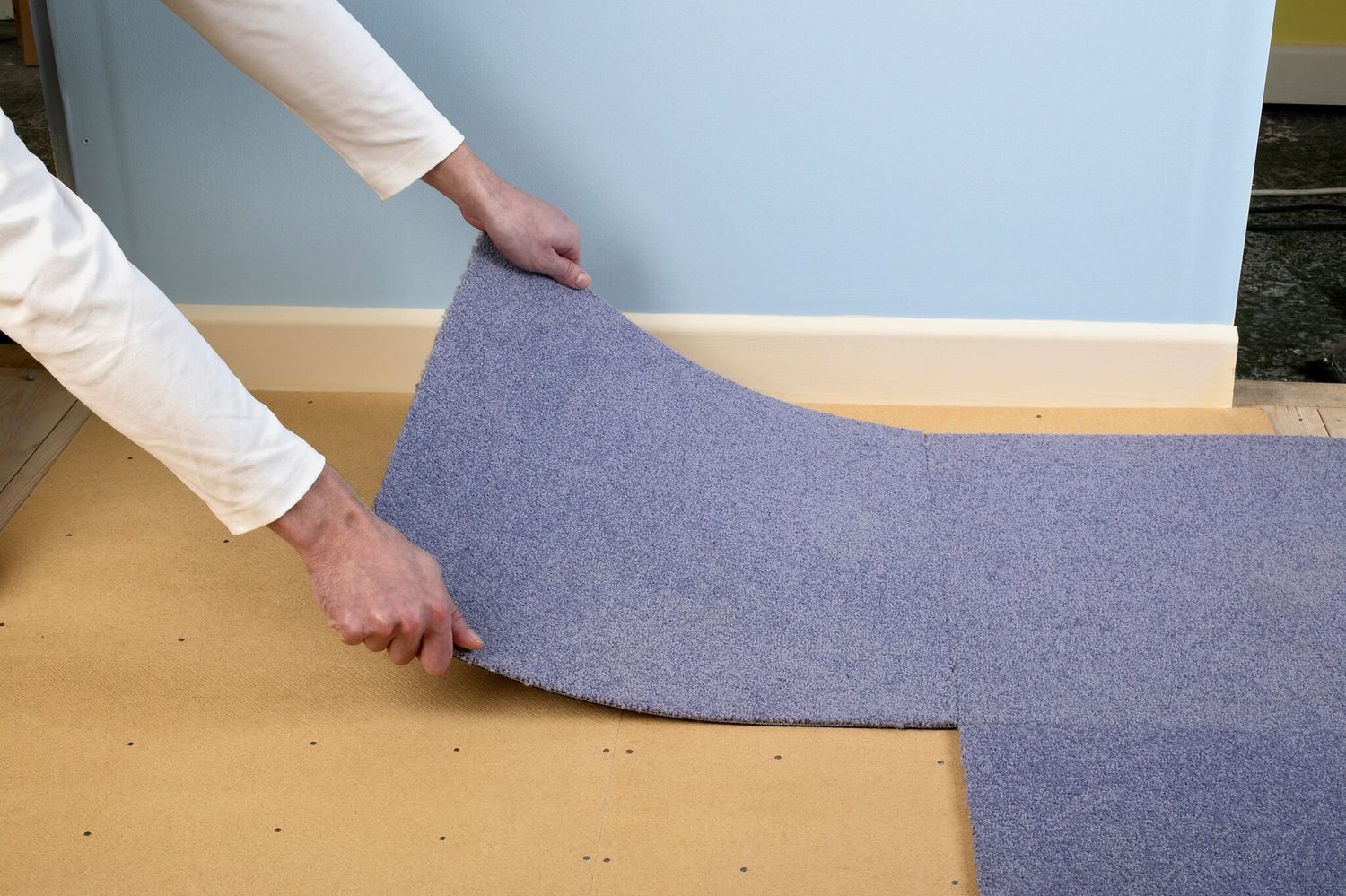Home>Production & Technology>Soundproofing>What Is The Best Soundproofing For Floors
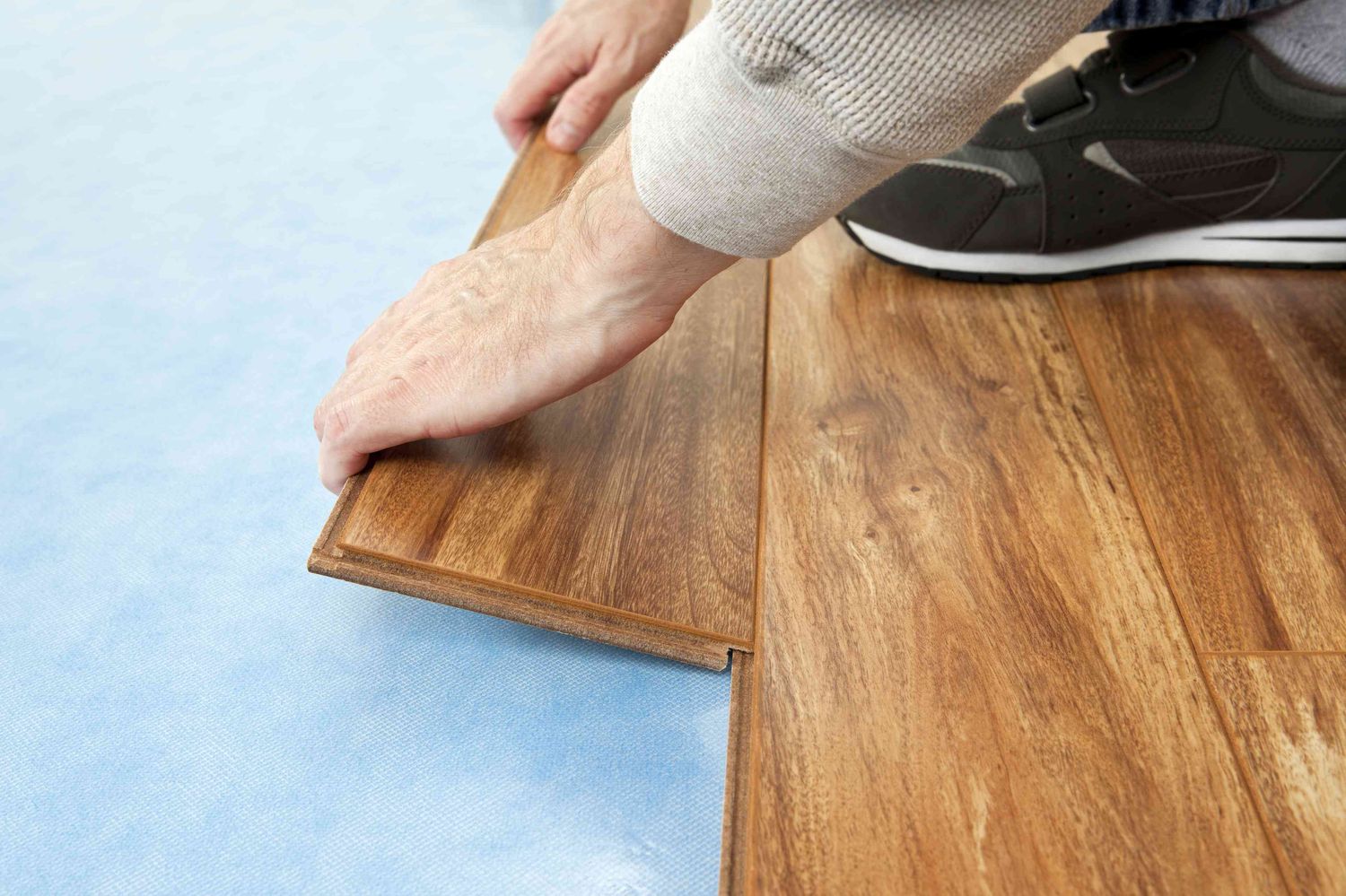

Soundproofing
What Is The Best Soundproofing For Floors
Published: January 26, 2024
Discover the best soundproofing options for floors and create a peaceful environment. Enhance your living space with effective soundproofing techniques and materials.
(Many of the links in this article redirect to a specific reviewed product. Your purchase of these products through affiliate links helps to generate commission for AudioLover.com, at no extra cost. Learn more)
Table of Contents
Introduction
When it comes to creating a peaceful and quiet living space, soundproofing is essential. Whether you live in an apartment building, have noisy neighbors, or want to minimize the sound traveling from one floor to another, finding the right soundproofing solution for your floors is crucial. Fortunately, there are several options available that can effectively reduce noise and create a more serene environment.
In this article, we will explore the best soundproofing options for floors, including carpet padding, acoustic underlayment, mass loaded vinyl (MLV), soundproofing floor mats or tiles, cork underlayment, rubber underlayment, engineered soundproofing solutions, and soundproofing floor joists. Each of these solutions offers different benefits and can be selected based on your specific needs and budget.
Before diving into the various soundproofing options, it’s important to understand the importance of soundproofing. Excessive noise can be disruptive and lead to a wide range of issues, including difficulty concentrating, disturbed sleep, increased stress levels, and decreased overall quality of life. By effectively soundproofing your floors, you can minimize the impact of external noises or the transmission of sound between different areas of your home.
Furthermore, soundproofing is not only beneficial for your personal comfort but also for maintaining good relationships with your neighbors. By preventing excessive noise from escaping your living space, you can be considerate of those around you and promote a peaceful living environment for everyone.
Now, let’s dive into the various soundproofing options for floors and explore their features, benefits, and installation methods.
Carpet Padding
Carpet padding is a popular choice for soundproofing floors, particularly in residential spaces. It is a material that is installed underneath the carpet to provide cushioning and insulation. While its primary purpose is to increase comfort and extend the lifespan of the carpet, it also offers sound-absorbing properties that help reduce noise transmission.
The effectiveness of carpet padding in soundproofing depends on its thickness and density. Thicker and denser padding tends to offer better sound insulation. The padding absorbs and traps sound waves, preventing them from bouncing off hard surfaces and traveling through the floor. This results in a quieter and more peaceful living space.
In addition to its soundproofing benefits, carpet padding provides thermal insulation and improves the overall comfort of the flooring. It helps to regulate room temperature and reduces heat loss, making it an energy-efficient choice. Furthermore, it provides a softer and more comfortable surface to walk on, reducing footstep noise and impact sound.
When it comes to installation, carpet padding is typically placed directly on the floor before the carpet is laid on top. It is important to select a high-quality padding that meets your soundproofing needs and complements the carpet. Consult with a flooring professional or refer to the manufacturer’s recommendations to ensure proper installation and optimal soundproofing performance.
It’s worth noting that while carpet padding can effectively reduce airborne sound, it may not be as effective in blocking impact noise, such as footfall or heavy object impacts. If impact noise is a significant concern, additional soundproofing measures may be needed, such as the use of acoustic underlayment or soundproofing mats.
In summary, carpet padding is a versatile and cost-effective soundproofing solution for residential floors. It offers sound-absorbing properties, thermal insulation, and improved comfort. However, keep in mind that it may not fully block impact noise. Consider the specific noise issues you are facing and choose the carpet padding that best suits your needs.
Acoustic Underlayment
Acoustic underlayment is another popular option for soundproofing floors, particularly in multi-story buildings or areas where impact noise is a concern. This specialized underlayment is designed to reduce both airborne and impact noise, making it an excellent choice for creating a quiet and peaceful living environment.
Acoustic underlayment is typically made from materials such as rubber, cork, or foam that have excellent sound-dampening properties. These materials absorb and dissipate sound waves, preventing them from traveling through the floor and into adjacent spaces. Additionally, acoustic underlayment helps to reduce vibration and impact noise caused by footfall or heavy objects.
One of the key benefits of acoustic underlayment is its versatility. It can be used with various flooring types, including hardwood, laminate, vinyl, and tile. This makes it a suitable choice for both residential and commercial spaces. Additionally, acoustic underlayment is easy to install and can be laid out directly on the subfloor before the flooring is installed.
When selecting acoustic underlayment, consider factors such as thickness, density, and the specific type of material. Thicker and denser underlayment generally provides better soundproofing performance. Additionally, some materials may offer additional benefits such as moisture resistance or thermal insulation.
It’s important to note that acoustic underlayment is most effective when used in conjunction with a sound-absorbing finish, such as carpet or area rugs. The combination of acoustic underlayment and a soft flooring surface helps to further reduce noise transmission and create a more comfortable living space.
In summary, acoustic underlayment is a versatile and effective soundproofing solution for both airborne and impact noise. It is compatible with various flooring types and relatively easy to install. Consider the thickness, density, and material of the underlayment to maximize its soundproofing capabilities. Pairing acoustic underlayment with a sound-absorbing finish will further enhance its performance.
Mass Loaded Vinyl (MLV)
Mass Loaded Vinyl (MLV) is a heavyweight soundproofing material that is highly effective in reducing both airborne and impact noise. It is composed of dense layers of vinyl with added fillers such as barium sulfate or calcium silicate, giving it excellent sound-blocking properties.
MLV is often used for soundproofing floors in areas where high levels of noise need to be controlled, such as recording studios, home theaters, or apartments located near busy streets. It is a flexible material that can be easily installed under flooring or between layers of drywall, providing excellent sound insulation.
One of the main advantages of MLV is its high mass. The heavy vinyl layers effectively absorb sound waves, preventing them from passing through the floor and into other areas. This makes MLV an ideal solution for reducing both airborne noise, such as conversations or music, and impact noise, such as footsteps or furniture movement.
When using MLV for soundproofing floors, it is important to ensure proper installation and coverage. MLV is typically rolled out directly onto the subfloor or underlayment, with seams sealed using special tape or adhesive. It can then be covered with another layer of flooring material, such as carpet, hardwood, or tile. This combination helps to further enhance the soundproofing capabilities of MLV.
It’s worth noting that MLV can be quite heavy and may require additional structural support, especially when used in multi-story buildings. Consulting with a professional or engineer is recommended to ensure proper installation and avoid any potential issues.
In summary, Mass Loaded Vinyl (MLV) is a heavyweight soundproofing material that effectively blocks both airborne and impact noise. It is commonly used in areas that require high levels of sound control. Proper installation and coverage are crucial to maximize its soundproofing capabilities. Consider consulting with a professional to ensure the correct application of MLV for your specific soundproofing needs.
Soundproofing Floor Mats or Tiles
Soundproofing floor mats or tiles are a convenient and effective solution for reducing noise transmission through floors. These mats or tiles are specifically designed to provide sound insulation and can be easily installed on top of existing flooring.
Soundproofing mats or tiles are typically made from materials such as rubber or foam that have excellent sound-absorbing properties. They work by absorbing and dampening sound vibrations, preventing them from traveling through the floor and into other areas.
There are various types of soundproofing mats or tiles available, each offering different levels of sound reduction. It’s important to consider the material, thickness, and density when selecting the right option for your needs.
One of the advantages of using soundproofing mats or tiles is their versatility. They can be installed in various areas of the home, including bedrooms, living rooms, or home offices. They are also suitable for both residential and commercial spaces. Additionally, they are easy to install and can be cut to size to fit any room layout.
Soundproofing mats or tiles can be used on top of different types of flooring, such as hardwood, laminate, vinyl, or tile. They can also be used in conjunction with other soundproofing materials, like acoustic underlayment, for enhanced noise reduction.
When installing soundproofing mats or tiles, be sure to follow the manufacturer’s instructions for proper installation. This may include ensuring a flat and clean surface, using adhesives or double-sided tape for secure attachment, and properly sealing any gaps or seams.
It’s important to note that while soundproofing mats or tiles can significantly reduce impact noise, they may not provide as much reduction in airborne noise. Therefore, for a comprehensive soundproofing solution, consider combining them with other methods such as carpeting, acoustic underlayment, or Mass Loaded Vinyl (MLV).
In summary, soundproofing floor mats or tiles are a convenient and versatile solution for reducing noise transmission through floors. They are easy to install, suitable for various flooring types, and offer good sound-absorbing properties. Consider using them alone or in combination with other soundproofing methods to achieve optimal noise reduction.
Cork Underlayment
Cork underlayment is an eco-friendly and effective choice for soundproofing floors. It is made from the bark of cork oak trees, which is harvested without cutting down the trees, making it a sustainable option. Cork underlayment offers excellent sound-absorbing properties and helps to reduce both airborne and impact noise.
One of the key advantages of cork underlayment is its natural ability to absorb sound vibrations. It effectively dissipates sound energy, preventing it from traveling through the floor and causing noise disturbances in adjacent areas. This makes it an ideal choice for creating a quieter and more peaceful living environment.
Aside from its soundproofing benefits, cork underlayment also provides thermal insulation and helps to regulate room temperature. It is a natural insulator, which means it can help to reduce heat loss and keep your space more energy-efficient. Additionally, cork underlayment is soft and comfortable to walk on, reducing impact sound and making your floors more comfortable to stand on.
Installing cork underlayment is relatively simple. It is typically laid out directly on the subfloor before the final flooring is installed on top. Cork rolls or sheets can be laid side by side and carefully sealed at the seams to ensure proper coverage and soundproofing performance.
It’s important to choose a high-quality cork underlayment that is the appropriate thickness for your specific needs. Thicker underlayment typically offers better soundproofing performance. Consult with a flooring professional or refer to the manufacturer’s recommendations to ensure proper installation and optimal soundproofing capabilities.
One point to note is that cork underlayment may not be as effective in blocking extreme low-frequency noise. If you are dealing with noise sources that produce very low-frequency sounds, such as heavy machinery or bass-heavy music, you may need to consider additional soundproofing measures.
In summary, cork underlayment is an eco-friendly and effective solution for soundproofing floors. It offers excellent sound-absorbing properties, thermal insulation, and enhanced comfort. Install it correctly for optimal results and consider other soundproofing methods if extreme low-frequency noise is a concern.
Rubber Underlayment
Rubber underlayment is a versatile and durable solution for soundproofing floors. It is made from recycled rubber materials and offers excellent sound-absorbing properties, making it an effective choice for reducing noise transmission.
One of the key advantages of rubber underlayment is its ability to absorb impact noise. It effectively reduces the sound of footsteps, dropped objects, and other impact-related noises that can be disruptive in living spaces. By minimizing impact noise, rubber underlayment helps create a quieter and more peaceful environment.
In addition to its soundproofing benefits, rubber underlayment also provides thermal insulation and cushioning. It helps to regulate room temperature, reduce heat loss, and provide a comfortable surface to walk on. It can even help to reduce floor vibrations caused by heavy machinery or appliances.
There are various types of rubber underlayment available, each with different thicknesses and densities. Thicker and denser rubber underlayment generally offers better soundproofing performance. It’s important to choose an underlayment that is suitable for the specific noise issues you are trying to address.
Installing rubber underlayment is typically straightforward. It is laid out directly on the subfloor before the final flooring is installed on top. Rubber rolls or sheets can be placed side by side, ensuring proper coverage and soundproofing capabilities.
It’s worth noting that rubber underlayment may have an odor initially due to its recycled rubber composition. However, this odor typically dissipates over time, especially with proper ventilation.
When selecting rubber underlayment, consider factors such as the thickness, density, and specific requirements of your flooring type. Consult with a flooring professional or refer to the manufacturer’s recommendations to ensure proper installation and optimal soundproofing performance.
In summary, rubber underlayment is a versatile and durable solution for soundproofing floors. It effectively reduces impact noise, provides thermal insulation, and offers cushioning. Choose an underlayment with the right thickness and density for your specific needs, and ensure proper installation for maximum soundproofing benefits.
Engineered Soundproofing Solutions
Engineered soundproofing solutions offer advanced and specialized methods for effectively reducing noise transmission through floors. These solutions are designed to address specific noise issues and provide targeted soundproofing benefits.
One example of an engineered soundproofing solution is the use of decoupling systems. A decoupling system involves creating a separation between the existing floor and the new flooring material. This separation helps to prevent sound vibrations from traveling through the floor structure. Decoupling systems often utilize materials like resilient channels or sound isolation clips, which help to isolate the flooring from the subfloor and reduce impact noise.
Another engineered soundproofing solution is the use of floating floors. A floating floor refers to a flooring system that is not directly attached to the subfloor. Instead, it is installed on top of a layer of soundproofing material, such as foam or cork, which helps to absorb sound vibrations and minimize noise transmission. Floating floors can be particularly effective in reducing impact noise, as they create an additional layer of insulation and separation between the existing floor and the new flooring material.
Soundproofing membranes are another engineered solution that can be used to reduce noise transmission. These membranes are thin layers that are placed between the subfloor and the new flooring material. They act as a barrier to block sound vibrations from traveling through the floor and into other areas. Soundproofing membranes are often made from materials like rubber or asphalt and are effective in reducing both airborne and impact noise.
When considering engineered soundproofing solutions, it’s important to consult with a professional who specializes in soundproofing. They can assess your specific noise issues and recommend the most suitable solution for your needs. Some solutions may require professional installation to ensure proper implementation and optimal soundproofing performance.
In summary, engineered soundproofing solutions offer advanced methods for effectively reducing noise transmission through floors. Decoupling systems, floating floors, and soundproofing membranes are examples of these solutions. Consult with a professional to identify the most appropriate option for your specific noise concerns and ensure proper installation for optimal soundproofing benefits.
Soundproofing Floor Joists
Soundproofing floor joists is a proactive approach to reducing noise transmission through floors by addressing the structural elements of the building. Floor joists, which form the framework for the floor, can often be a source of sound vibrations and impact noise. By soundproofing the floor joists, you can significantly minimize noise transfer and create a quieter living space.
There are a few different methods of soundproofing floor joists that can be employed. One common technique is to install insulation between the joists. This insulation helps to absorb sound vibrations and prevent them from traveling through the floor structure. Fiberglass or mineral wool insulation can be stuffed into the gaps between the joists to improve soundproofing performance.
Another approach is to apply a resilient channel or isolation clips to the floor joists. These materials create a decoupling effect, separating the floor structure from the joists. As a result, sound vibrations are less likely to transfer through the joists and into other areas of the building. It is essential to follow proper installation guidelines when using resilient channels or isolation clips to ensure their effectiveness.
Additionally, applying mass-loaded vinyl (MLV) to the floor joists can further enhance soundproofing. MLV is a dense material that helps to block sound transmission. By affixing MLV to the joists, you can effectively impede the transfer of sound vibrations through the structural framework.
In some cases, it may also be beneficial to reinforce the floor joists to minimize vibrations and improve soundproofing. This can be achieved by adding additional layers of wood, steel bracing, or using products specifically designed to reinforce joists.
When soundproofing floor joists, it’s important to consider the overall impact on the floor height and structural integrity. Consult a professional, such as a structural engineer or soundproofing specialist, to ensure that the chosen methods are appropriate for your specific situation and comply with building codes.
In summary, soundproofing floor joists is an effective way to reduce noise transmission through floors. Insulating between the joists, using resilient channels or isolation clips, applying MLV, and reinforcing the joists are common methods employed for soundproofing. Consult with a professional to determine the most suitable approach for your needs and ensure proper installation for optimal soundproofing results.
Conclusion
Soundproofing floors is an essential consideration for creating a peaceful and quiet living space. Excessive noise can disrupt our daily lives, affect our well-being, and strain relationships with neighbors. Thankfully, there are several soundproofing options available to effectively reduce noise transmission through floors.
Carpet padding is a popular and cost-effective choice, providing both comfort and sound absorption. Acoustic underlayment offers versatile soundproofing properties, suitable for various flooring types. Mass Loaded Vinyl (MLV) provides heavyweight sound-blocking capabilities, while soundproofing mats or tiles offer convenient and targeted solutions. Cork underlayment and rubber underlayment offer eco-friendly options with additional thermal insulation benefits. Engineered soundproofing solutions, such as decoupling systems or floating floors, provide advanced techniques for noise reduction. Finally, soundproofing floor joists can address structural elements to minimize sound vibrations.
When choosing a soundproofing solution, consider the specific noise issues you face, your budget, and the compatibility with your existing flooring. It is important to consult with professionals or refer to manufacturer recommendations to ensure proper installation and maximize the soundproofing benefits.
By implementing the appropriate soundproofing measures, you can create a more serene environment, improve your quality of life, and maintain good relationships with neighbors. Whether you live in an apartment, a house, or a multi-story building, soundproofing floors is a worthwhile investment for a peaceful and enjoyable living experience.

